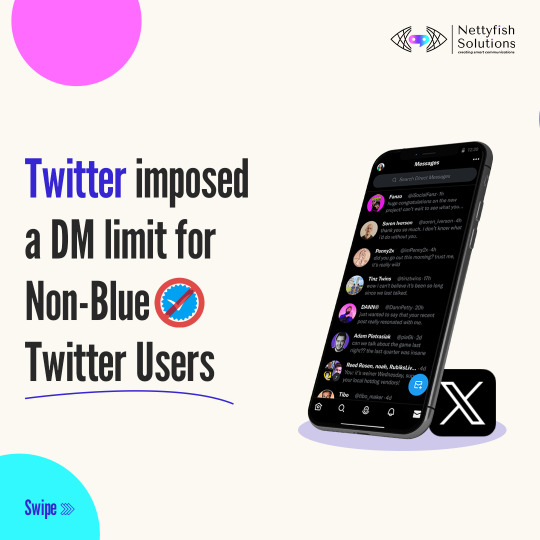#Telecom API
Explore tagged Tumblr posts
Text
The global demand for Telecom API was valued at USD 325.1 Million in 2023 and is expected to reach USD 1960.92 Million in 2032, growing at a CAGR of 22.10% between 2024 and 2032.The telecommunications industry is undergoing a significant transformation, driven by the proliferation of digital technologies and the increasing demand for seamless connectivity. One of the key catalysts of this transformation is the Telecom API (Application Programming Interface) market. Telecom APIs enable developers to integrate telecom services such as voice, messaging, and data into applications, driving innovation and enhancing user experiences. This article explores the current state of the Telecom API market, its growth drivers, key trends, and future prospects.
Browse the full report at https://www.credenceresearch.com/report/telecom-api-market
Market Overview
The global Telecom API market has witnessed robust growth over the past decade. As of 2023, the market is valued at approximately $250 billion and is projected to reach $450 billion by 2028, growing at a compound annual growth rate (CAGR) of 12.5%. This growth is attributed to the increasing adoption of cloud-based services, the proliferation of smartphones, and the rising demand for IoT (Internet of Things) applications.
Key Growth Drivers
1. Proliferation of Smartphones and Mobile Applications: The widespread use of smartphones and the surge in mobile applications have created a substantial demand for telecom APIs. These APIs allow developers to integrate telecom services into their apps, enhancing functionality and user engagement. Services like SMS, voice calls, and mobile payments are seamlessly integrated using telecom APIs, driving their adoption.
2. Rising Demand for IoT and M2M Communication: The Internet of Things (IoT) revolution has led to an explosion of connected devices, ranging from smart home appliances to industrial machinery. Telecom APIs play a crucial role in enabling machine-to-machine (M2M) communication, facilitating data exchange between devices and networks. This has opened new revenue streams for telecom operators and API providers.
3. Shift Towards Cloud-based Services: Cloud computing has become the backbone of modern digital infrastructure. Telecom APIs enable seamless integration of telecom services with cloud platforms, allowing businesses to scale their operations and enhance service delivery. Cloud-based telecom APIs also offer cost advantages and flexibility, further driving their adoption.
4. Digital Transformation Initiatives: Enterprises across various industries are embarking on digital transformation journeys to improve efficiency and customer experiences. Telecom APIs are instrumental in these initiatives, enabling businesses to leverage telecom capabilities in their digital solutions. For instance, APIs for SMS notifications, voice recognition, and video conferencing are increasingly used in customer service applications.
Key Trends
1. 5G Integration: The rollout of 5G networks is set to revolutionize the telecom industry. Telecom APIs are evolving to leverage the capabilities of 5G, such as low latency, high-speed data transfer, and enhanced connectivity. This will open up new opportunities for developers to create innovative applications and services that were previously not possible with 4G technology.
2. Expansion of CPaaS (Communication Platform as a Service): CPaaS platforms are gaining traction as they provide developers with a comprehensive suite of communication APIs, including voice, messaging, and video. These platforms simplify the integration of telecom services into applications, reducing development time and costs. The CPaaS market is expected to grow significantly, driven by the increasing demand for real-time communication solutions.
3. API Security and Compliance: As the use of telecom APIs expands, so do concerns about security and compliance. Ensuring the security of data transmitted through APIs and adhering to regulatory requirements are critical challenges. Telecom API providers are investing in advanced security measures and compliance frameworks to address these concerns, enhancing trust among users and businesses.
4. Artificial Intelligence and Machine Learning Integration: The integration of AI and ML technologies with telecom APIs is opening new avenues for innovation. AI-powered APIs for voice recognition, chatbots, and predictive analytics are being developed to enhance user experiences and automate processes. This trend is expected to drive further growth in the Telecom API market.
Future Prospects
The future of the Telecom API market looks promising, with several factors poised to drive its growth. The continued expansion of 5G networks, the rise of IoT applications, and the increasing adoption of cloud-based services will create new opportunities for telecom API providers. Additionally, the integration of emerging technologies such as AI, ML, and blockchain will further enhance the capabilities and security of telecom APIs.
Moreover, as businesses continue to prioritize digital transformation, the demand for telecom APIs will remain strong. Enterprises will increasingly rely on these APIs to deliver innovative services, improve customer engagement, and streamline operations.
Key Players
AT&T Intellectual Property
Telefonica S.A.
Google
Verizon
TWILIO INC.
Others
Segmentation
By Type of API
SMS API (Short Message Service API)
Voice API
Payment API
Location API
WebRTC API
Authentication API
Subscriber Identity Module (SIM) Card API
By Deployment Model
Cloud-based APIs
On-Premises APIs
By End-User Industry
Telecom Operators/Service Providers
Enterprises
Developers/Startups
By Service Type
Payment Services
Content Delivery
Location-Based Services
Identity Management
Voice Calling Services
Data and Messaging Services
By User Type
Internal Telecom API Users (within the telecom operator)
External Telecom API Users (third-party developers, enterprises)
By Revenue Model
Subscription-Based
Pay-as-You-Go
Freemium Models
By Security Type
OAuth (Open Authorization)
Token-Based Security
Other Authentication Mechanisms
By Region
North America
The U.S.
Canada
Mexico
Europe
Germany
France
The U.K.
Italy
Spain
Rest of Europe
Asia Pacific
China
Japan
India
South Korea
South-east Asia
Rest of Asia Pacific
Latin America
Brazil
Argentina
Rest of Latin America
Middle East & Africa
GCC Countries
South Africa
Rest of Middle East and Africa
Browse the full report at https://www.credenceresearch.com/report/telecom-api-market
About Us:
Credence Research is committed to employee well-being and productivity. Following the COVID-19 pandemic, we have implemented a permanent work-from-home policy for all employees.
Contact:
Credence Research
Please contact us at +91 6232 49 3207
Email: [email protected]
Website: www.credenceresearch.com
0 notes
Text

Connect, engage, and convert your customers instantly with Inbox Telecommunication’s powerful WhatsApp API solution. Whether it's sending notifications, automating responses, or supporting live chat, our API empowers businesses with real-time communication. Scale smarter, build trust, and grow faster—one message at a time. #WhatsAppAPI #InboxTelecom #BusinessMessaging #CustomerEngagement
#telecom#startup#business#government#marketing#whatsapp api#sms marketing#bulk sms marketing#bulk sms service#bulk sms company#sms api#bulk sms#rcs message
1 note
·
View note
Text
Telecom API Market Size, Share And Trends Analysis Report
The global telecom API market was valued at USD 827.45 billion in 2030 and is estimated to expand at a CAGR of 21.3% from 2023 to 2030, according to a study conducted by Grand View Research, Inc. Growing demand for smartphones integrated with features such as GPS services, digital wallets, 5G, and Near-Field Communication (NFC), among others, is estimated to drive the market growth in the forecast period. Application programming interface (API) facilitates web-based solution developers to develop applications through a single point of contact using the capabilities offered by the application programming interface (API) platform for agile application development.
The increasing adoption of the Internet of Things (IoT) in the telecommunication sector is anticipated to sustain market growth over the forecast period. CSPs such as Orange, Verizon, AT&T, Inc., Google LLP, and others are providing their IoT API platforms to various sectors such as transportation, retail, utilities, and manufacturing among others. AT&T has an API marketplace to help solution providers quickly build web-based collaboration apps for their text, video, voice, and other communications services. The IoT platform developed by Orange namely Live Objects forms connections centrally through a web portal and standard API.
Web Real-Time Communication (WebRTC) API is a compilation of various standard APIs and protocols that handle simultaneously facilitate data sharing and peer-to-peer teleconferencing eliminating the necessity for installing any additional third-party plug-ins. The Telecom API market is expected to witness significant growth owing to the rising adoption of WebRTC by various Communication Service Providers (CSPs) and technology providers such as AT&T Intellectual Property, Huawei Technologies Co., Ltd., Vodafone Group, Orange, Cisco Systems, Inc., and Google among others. However, stringent government regulations for end-user data protection are expected to act as an inhibitor to market growth over the forecast period.
Gather more insights about the market drivers, restrains and growth of the Telecom API Market
Telecom API Market Report Highlights
• The messaging API segment of the telecom API market is predicted to account for the largest market share in 2022 and is expected to expand at a CAGR of 21.4% in the forecast period. This growth is attributed to the increasing adoption of A2P messaging by large organizations for applications such as product announcements, and promotional activities among others.
• The partner developer segment is estimated to expand at the fastest CAGR of over 22.0% in the forecast period. Thus, growth can be attributed to the rising number of internet users and increasing adoption of over-the-top (OTT) media services by organizations.
• Asia Pacific held a maximum revenue share of over 28% in 2022 and is projected to witness a healthy CAGR in the forecast period. This growth is owing to the increasing number of smartphone users in countries such as India and China.
• The telecom API market is fragmented and characterized by high competition with the presence of major global players such as among others. These companies are adopting various organic and inorganic growth strategies such as collaborations, mergers & acquisitions to increase their market presence and expand their existing product portfolio.
Telecom API Market Segmentation
Grand View Research has segmented the global telecom API market based on type, end-user, and region:
Telecom API Type Outlook (Revenue, USD Billion, 2018 - 2030)
• Messaging API
• Web RTC API
• Payment API
• IVR API
• Location API
• Others
Telecom API End-user Outlook (Revenue, USD Billion, 2018 - 2030)
• Enterprise Developers
• Internal Telecom Developers
• Partner Developers
• Long Tail Developers
Telecom API Regional Outlook (Revenue, USD Billion, 2018 - 2030)
• North America
o U.S.
o Canada
• Europe
o U.K.
o Germany
o France
o Rest of Europe
• Asia Pacific
o China
o India
o Japan
o Rest of Asia Pacific
• Latin America
o Brazil
o Mexico
o Rest of Latin America
• Middle East & Africa
Order a free sample PDF of the Telecom API Market Intelligence Study, published by Grand View Research.
#Telecom API Market#Telecom API Market Size#Telecom API Market Share#Telecom API Market Analysis#Telecom API Market Growth
0 notes
Text

GCCM LONDON, January 2025
We’re Excited to Announce that team Saif Telecommunications will be Attending “GCCM LONDON, January 2025”
Don’t Miss The Chance To Connect With Our Team To Discuss Business Opportunities
Connect Us on Social Media –
Facebook - https://www.facebook.com/saiftelecommunicationspteltd
Instagram - https://www.instagram.com/saiftelecommunicationspteltd/?next=%2F
Twitter - https://x.com/saiftelecomm
LinkedIn - https://www.linkedin.com/company/saiftelecommunications/
#GCCM2025 #GCCMEvents #GCCMLONDON2025 #Telecommunications #Telecom #Voice #KuwaitIGW #Goals #Partnership #CCConnect #TelecomNetworking #CompanyJourney2025 #CarrierCommunity #london #Saiftelecommunications #saiftelecommunicationspteLtd
#Telecommunications#telecomindustry#telecommunication global#telecom#telecommunication worldwide#telecommunication#communication#telecommunication services#a silent voice#voip#api
0 notes
Text
#Telecom Argentina - Nueva API para segurizar las transacciones digitales
A un año de haberse sumado a la iniciativa global Open Gateway, Telecom lanza la segunda API (interface programable de aplicaciones) para seguir aportando a la propuesta de valor de seguridad digital y antifraude, la primera vertical que la compañía decidió desarrollar en el marco de los estándares establecidos por CAMARA, el proyecto de código abierto impulsado por la Linux Fundation en…
0 notes
Text
The size of the global telecom API platform market was estimated at US$ 343.82 billion in 2023 and is projected to grow at a CAGR of 19.87% to US$ 1222.66 billion by 2030.
0 notes
Text

Enhance Your SMS Campaigns with SMSGatewayCenter’s Connectivity Channels
Find out how to maximize the effectiveness of your bulk SMS campaigns with SMSGatewayCenter's dependable SMPP Channel, adaptable API, and user-friendly Web Interface. Find out more about our robust connectivity options for successful SMS marketing.
#Bulk SMS#SMS marketing#SMPP Channel#SMS API#Web Interface#SMSGatewayCenter#SMS campaigns#SMS connectivity#SMS automation#telecom operators#SMS aggregators
1 note
·
View note
Text
API vs. SDK: Understanding the Key Differences

In software development, two commonly used terms are API and SDK. While they often appears together, they refer to distinct concepts. In this article, we will delve into the dissimilarities between these two elements, shedding light on their unique functionalities and use cases.
API: The Gateway to Interact with External Services
API, short for Application Programming Interface, acts as an intermediary that enables communication between different software applications. It defines a set of rules, protocols, and tools that allow developers to interact and integrate their applications with external services, libraries, or platforms. Essentially, an API specifies how software components should interact, providing a well-defined interface.
Imagine you have a mobile application that needs to fetch data from a remote server. Instead of manually writing the code to establish a connection, send requests, and handle responses, you can utilize an API provided by the server. The API will have pre-defined endpoints and methods that streamline the process. By making specific requests to the API, your application can retrieve the necessary data or perform desired actions.
APIs are typically designed to be language-agnostic, which means they can be used with different programming languages. They are often based on widely accepted standards, such as REST (Representational State Transfer) or GraphQL, making them accessible and interoperable across various platforms and systems. APIs are commonly used for accessing web services, social media integration, payment gateways, and many other purposes that require communication between different software components.
SDK: A Comprehensive Toolkit for Developers
SDK, on the other hand, stands for Software Development Kit. It is a collection of tools, libraries, documentation, and sample code that simplifies the development of software applications for a specific platform or framework. Unlike APIs, SDKs are tailored to a particular environment and provide a comprehensive set of resources to aid developers in building applications.
Let's say you want to create a mobile application for iOS devices. Instead of starting from scratch and dealing with low-level details, you can use an SDK specifically designed for iOS development. The SDK will include libraries, frameworks, emulators, debugging tools, and other resources necessary to streamline the development process. It encapsulates all the essential components required to build applications for the targeted platform, acting as a one-stop shop for developers.
SDKs are platform-specific and provide a higher level of abstraction compared to APIs. They often come with development environments, integrated development tools (IDEs), and emulators or simulators that enable developers to test their applications in a controlled environment. SDKs are widely used in mobile app development, game development, and other scenarios where developers need to work closely with a particular platform or framework.
Key Differences Between API and SDK
While both API and SDK facilitate software development and integration, they have distinct characteristics:
· Level of Abstraction: APIs provide a standardized interface for interacting with external services, abstracting away the implementation details. SDKs, on the other hand, offer a more comprehensive set of tools and resources, providing a higher level of abstraction for developing applications on a specific platform. · Scope: APIs are focused on defining protocols and rules for communication between software components. They are often language-agnostic and can be utilized across various platforms. SDKs, however, are platform-specific and provide a complete package of resources for developing applications tailored to the targeted platform or framework. · Functionality: APIs primarily facilitate communication and data exchange between different software systems. SDKs, in addition to providing access to APIs, offer a wide range of tools, libraries, and documentation to aid developers in creating applications on a specific platform. · Use Cases: APIs are commonly used for integrating external services, accessing web services, and building software components that need to interact with other systems. SDKs are employed in scenarios where developers need to build applications specifically for a particular platform or framework, such as mobile app development or game development.
In summary, APIs and SDKs are two essential components in software development, each serving distinct purposes. APIs act as gateways, allowing software systems to interact and exchange data with external services. SDKs, on the other hand, provide a comprehensive toolkit for developing applications on a specific platform or framework, encompassing all the necessary resources and tools.
Source: https://www.iplook.com/info/api-vs-sdk-understanding-the-key-differences-i00349i1.html
0 notes
Text
Social media, telcos, lobby for 18-24 months to comply with DPDP Act
Social media companies, telecom operators, and Indian startups are set to lobby for a transition period of 18-24 months to fully comply with the Digital Personal Data Protection (DPDP) Act, 2023, citing technological complexities in two clauses, Business Standard has learnt. Major industry bodies representing local and global companies such as social media companies, big tech platforms, and…

View On WordPress
#Act#API#comply#Digital Personal Data Protection (DPDP) Act#DPDP#Indian startups#lobby#media#months#Social#Social media companies#telcos#telecom operators
0 notes
Text
During this festive season, bulk SMS provides a seamless and effective way to inform and involve staff members and customers. The Bulk SMS Platform makes sure your communications stand out because of its high response rates, affordable prices, and capacity for personalized messages.
0 notes
Text
Key Players in Telecom API Market: A Competitive Landscape Overview
The global telecom API market was valued at USD 185.11 billion in 2022 and is projected to grow at a robust compound annual growth rate (CAGR) of 21.3% from 2023 to 2030. Telecom APIs (Application Programming Interfaces) are integral to managing various web-based services such as cloud computing, banking, and identity management within the telecom industry. These APIs facilitate the organization of programming instructions and adhere to standard protocols, enabling the seamless operation of telecom software solutions. The growing adoption of telecom APIs is helping to optimize system performance and provide cost-effective solutions by improving the functionality of existing web-based applications.
Telecom APIs are crucial because they offer agility in the development of mobile applications. By acting as a bridge between different software systems, these APIs allow developers to focus on building the core functionalities of their applications, rather than reinventing the wheel to create communication protocols from scratch. This significantly reduces the time, effort, and cost required for mobile app development.
Telecom APIs are revolutionizing the telecom sector by improving the flexibility and scalability of telecom systems. The ability to easily connect various applications, devices, and services enhances operational efficiency and enables businesses to rapidly deploy new services to their customers. As more industries and sectors adopt IoT technologies, the telecom API market will continue to expand at a phenomenal rate, providing significant growth opportunities for both telecom operators and technology providers.
In conclusion, the growing adoption of IoT, wearable devices, and cloud-based solutions are set to drive the telecom API market to new heights, with an anticipated CAGR of 21.3% from 2023 to 2030. The continuous need for seamless connectivity, cost-effective solutions, and efficient system integration will be key factors propelling market growth over the forecast period.
Gather more insights about the market drivers, restrains and growth of the Telecom API Market
Regional Insights
North America
In 2022, North America held the largest market share in the Telecom API market, accounting for over 29% of the total market revenue during the forecast period. This growth can be attributed to the strong presence of major market players in the region, including global technology giants like Broadcom, AT&T Intellectual Property, Google, and Oracle Corporation, among others. These companies are key contributors to the development and adoption of telecom API solutions, enhancing the region’s dominance in the market.
Additionally, the adoption of advanced network technologies, such as 4G and the ongoing improvements in 5G technology, has been a significant factor driving the high growth of telecom APIs in North America. With the integration of 4G and 5G networks, telecom APIs are enabling faster and more efficient communication services. These technologies facilitate a wide range of services, such as voice and video calls, as well as video and speech integration services. By using telecom APIs in conjunction with 4G/5G technologies, businesses can deliver more robust and high-quality services, leading to increased productivity and customer satisfaction.
Furthermore, as 5G networks continue to expand, telecom APIs will play a critical role in managing the large volumes of data and ensuring the efficient functioning of communication services. The North American market is expected to maintain strong growth as demand for enhanced connectivity and performance increases.
Asia Pacific
The Asia Pacific region is projected to be one of the most attractive markets for telecom APIs, driven by several factors, including the rapid increase in mobile subscribers and the growing adoption of 5G technologies. The region is experiencing the fastest compound annual growth rate (CAGR) of over 25.1% from 2023 to 2030, reflecting the strong momentum of market expansion.
According to a report by GSMA, as of 2021, there were more than 1.2 billion mobile internet users in Asia Pacific. This number is expected to grow to 1.5 billion by 2025, further boosting demand for telecom APIs. The growing number of mobile users across countries like China, India, and Japan, combined with the rapid rollout of 5G networks, is creating ample opportunities for telecom API providers to offer innovative solutions that cater to the increasing need for fast, reliable communication.
With the rise of mobile internet users, there is also a surge in the demand for services that rely on mobile networks, including mobile banking, IoT applications, digital entertainment, and e-commerce. Telecom APIs are central to the success of these services, as they provide the necessary interface to connect users, devices, and applications seamlessly.
The adoption of 5G technology is expected to significantly enhance the capabilities of telecom APIs, enabling more efficient data transmission, low-latency communication, and the integration of advanced technologies like augmented reality (AR), virtual reality (VR), and autonomous vehicles. As these technologies proliferate across Asia Pacific, telecom APIs will be essential for managing complex, high-volume, and real-time communications, driving continued growth in the market.
Browse through Grand View Research's Communication Services Industry Research Reports.
• The global mobile marketing market size was valued at USD 18.90 billion in 2023 and is projected to grow at a compound annual growth rate (CAGR) of 23.9% from 2024 to 2030.
• The global optical transport network (OTN) hardware market size was valued at USD 19.21 billion in 2023 and is projected to grow at a compound annual growth rate (CAGR) of 7.9% from 2024 to 2030.
Key Companies & Market Share Insights
The telecom API market is highly fragmented and characterized by intense competition among key players operating in various regions. Within each region or country, the market is often dominated by a few prominent Communications Service Providers (CSPs) that lead the charge in the development and deployment of telecom APIs. These CSPs, along with third-party solution developers and system integrators, are continuously adopting organic and inorganic growth strategies to maintain or expand their market presence.
Key Telecom Api Companies
Key growth strategies being implemented include:
• Mergers and Acquisitions (M&A)
• Partnerships
• Joint Ventures or Collaborations
• New Product and Service Launches
Order a free sample PDF of the Telecom API Market Intelligence Study, published by Grand View Research.
#Telecom API Market#Telecom API Market Analysis#Telecom API Market Report#Telecom API Market Regional Insights
0 notes
Text
Exciting digital updates in July! 🚀 Stay tuned for the latest innovations! #DigitalUpdates #July2023





Telecom Software Company in Chennai
0 notes
Text
#Telecom Operators hike commercial bulk SMS cost#bulk sms#bulk sms service#whatsapp business api#bulk sms provider#bulk sms api#bulk sms company#bulk sms delhi#bulk sms gateway
0 notes
Text
The Benefits of Integrating Text-to-Speech Technology for Personalized Voice Service
Sinch is a fully managed service that generates voice-on-demand, converting text into an audio stream and using deep learning technologies to convert articles, web pages, PDF documents, and other text-to-speech (TTS). Sinch provides dozens of lifelike voices across a broad set of languages for you to build speech-activated applications that engage and convert. Meet diverse linguistic, accessibility, and learning needs of users across geographies and markets. Powerful neural networks and generative voice engines work in the background, synthesizing speech for you. Integrate the Sinch API into your existing applications to become voice-ready quickly.

Voice Service
Voice services, such as Voice over Internet Protocol (VoIP) or Voice as a Service (VaaS), are telecommunications technologies that convert Voice into a digital signal and route conversations through digital channels. Businesses use these technologies to place and receive reliable, high-quality calls through their internet connection instead of traditional telephones. We at Sinch provide the best voice service all over India.
Voice Messaging Service
A Voice Messaging Service or System, also known as Voice Broadcasting, is the process by which an individual or organization sends a pre-recorded message to a list of contacts without manually dialing each number. Automated Voice Message service makes communicating with customers and employees efficient and effective. With mobile marketing quickly becoming the fastest-growing advertising industry sector, the ability to send a voice broadcast via professional voice messaging software is now a crucial element of any marketing or communication initiative.
Voice Service Providers in India
Voice APIs, IVR, SIP Trunking, Number Masking, and Call Conferencing are all provided by Sinch, a cloud-based voice service provider in India. It collaborates with popular telecom companies like Tata Communications, Jio, Vodafone Idea, and Airtel. Voice services are utilized for automated calls, secure communication, and client involvement in banking, e-commerce, healthcare, and ride-hailing. Sinch is integrated by businesses through APIs to provide dependable, scalable voice solutions.
More Resources:
The future of outbound and inbound dialing services
The Best Cloud Communication Software which are Transforming Businesses in India
4 notes
·
View notes